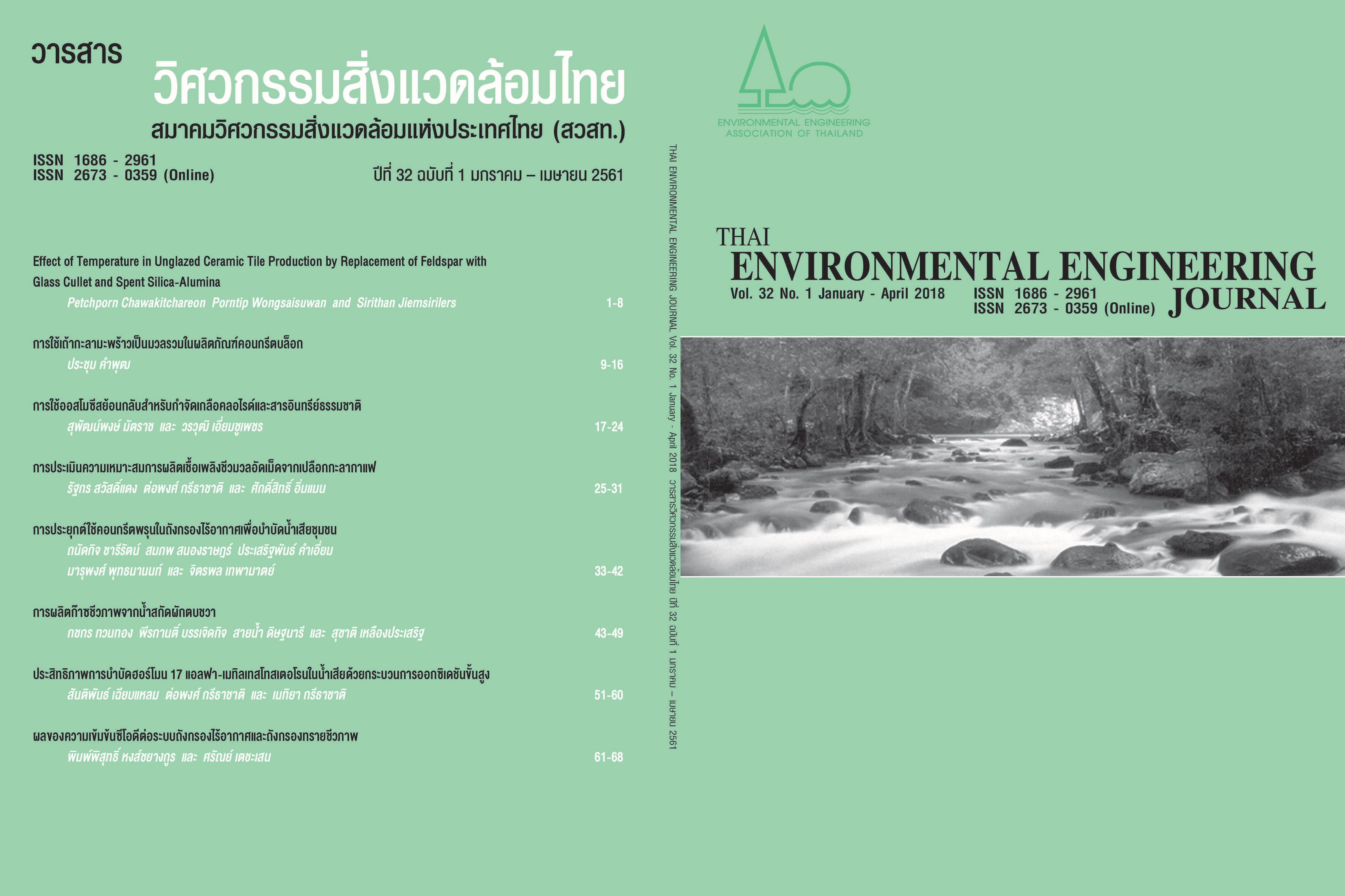Evaluation of Biomass Pellets Production from Coffee Endocarp
Main Article Content
Abstract
The objective of this research is to study the technical feasibility of biomass pellets production from coffee endocarp as agriculture residues in order to use as alternative energy. The biomass pellets in this research was produced by hot-press process technique mixing with tapioca starch. The feasibility study consists 2 part (1) Fuel properties of the pellets and (2) environmental benefit in term of greenhouse gas emission compared with firewood from Leucaena leucocepphala and LPG gas. The fuel properties of pellets were analyzed according to ASTM standards. The results show the heating value of pellets was 18.2 MJ/kg and bulk density, moisture content, and ash were 530kg/m3, 11.66%, 0.93% respectively. The 100 kg. of biomass pellets from coffee endocarp release the greenhouse gas by 23.25 kg. less than LPG gas and firewood from Leucaena leucocepphala that release the greenhouse gas by 41.22 and 75.54 kg. respectively.
Article Details
References
2 December]. (in Thai)
[2] Yubolket, V., Settheetham, D., 2017, Quality Comparison of Leaf-Trash Chunk-Compressed Fuel by Compressor and Hand, KKU RESEARCH JOURNAL. 17(4):
85-96. (in Thai)
[3] Thanapol, T., Surichai, P., Preepaween, P., Panuwat, T., 2015, Community-Based Renewable Energy from Biomass Briquettes Fuel from Coconut Leaf, Thammasat Journal of Science and Technology is a publication of Thammasat University. 23(3): 418-131. (in Thai)
[4] Energy Policy and Planning Office, Ministry of Energy. (2016). indicators for emissions of carbon dioxide per gross domestic product. Retrieved from http://www.tdri.or.th (in Thai)
[5] Sukanan, C., Soralump, C. and Charnsethikul, P., 2012. Assessment and guidelines for reduction of greenhouse gas emissions Kasetsart university. The 11th Conference on Environmental, Chiang Rai. (in Thai).
[6] Usubharatana, P. and Phungrussami, H., 2014, carbon footprint of organization: case study for Thammasat University. Thammasat Journal of Science and Technology. 22(1): 1-12. (in Thai)
[7] Wangsantitham, A., 2014, Carbon footprint of organization of bureau of energy human resource development. Master of Engineering (Energy and environmental technology management) Thesis, Thammasat University. (in Thai)


